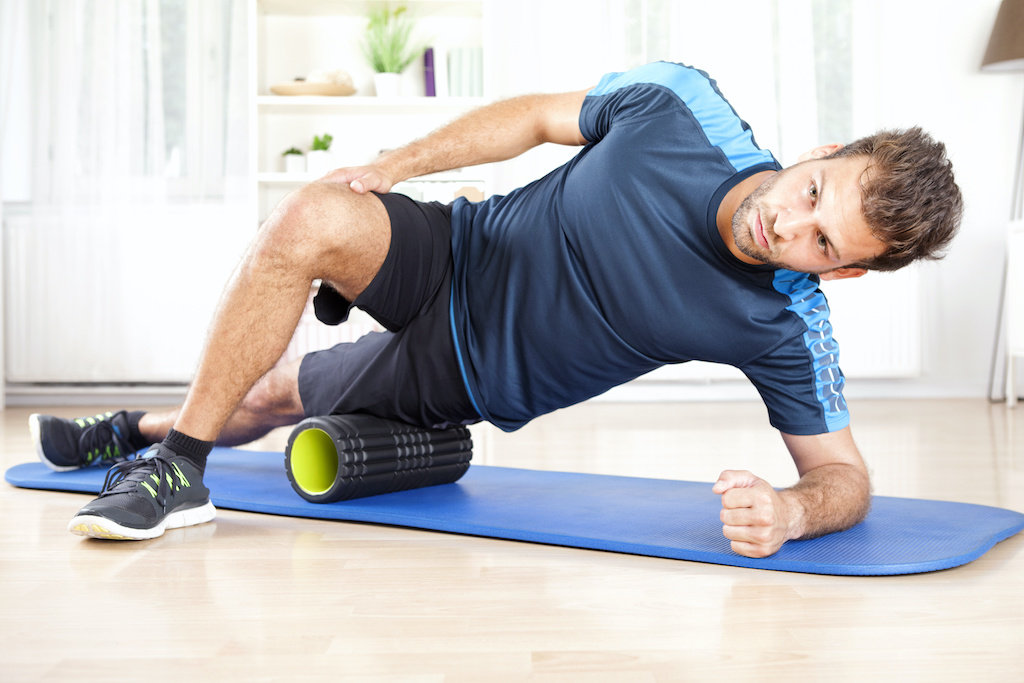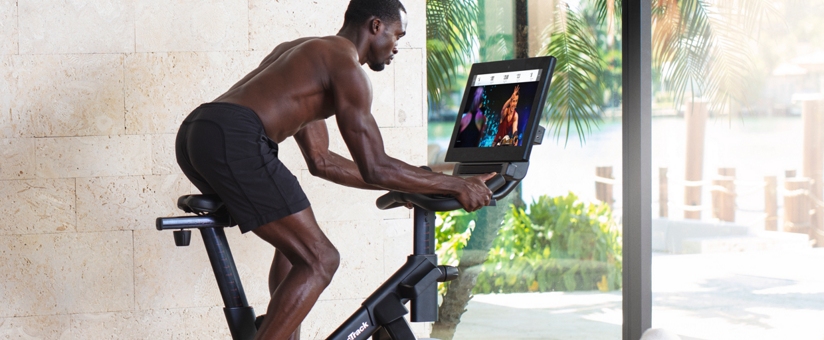After a workout, there is nothing better than to chill out than planning a massage at home. Self-massage helps limit muscle tension and promotes recovery. With or without accessories, discover the right ways to make your sports massages more successful.
Why carry out a massage after exercise?

After the effort of exercising, a massage brings with it many benefits, whatever the level and the activity that has been conducted:
- It complements the cooling of the body at its temperature drops.
- By stimulating micro-circulation and intramuscular circulation, it will help to eliminate the metabolic waste produced during sporting activities, such as lactic acid, while improving oxygenation and the supplying of nutrients to muscles.
- It facilitates the return to physical exercise by promoting muscle recovery and reducing tension in both muscles and tendons.
- It instantly soothes certain pains of an inflammatory nature and helps to relax the body, both from a nervous system and muscular point of view.
- It prevents the onset of muscle soreness.
To take full advantage of these benefits, it would be advisable to visit a professional masseur several times a month, for example, during a competition or after training. Higher-level athletes often have a dedicated physiotherapist who will massage them before and after exercise. That said, massaging yourself at home is also an interesting option, as well as being more convenient to set up after each workout. A self-massage can also be considered as something that complements the sort of massage performed by a professional.
Get equipped and learn the right ways to carry out a self-massage

With a few basic techniques and the right equipment, a massage at home after a workout is within everyone’s reach.
Accessories for massaging at home
Different accessories are likely to be of interest when carrying out a self-conducted massage after sport:
- Massage rollers: Making use of the body’s weight, they allow you to massage your thighs and calves.
- Massage balls: These can help you to massage certain sensitive points of the back by leaning against a wall, or even provide a relaxing self-massage of the arch of the foot. These acupressure balls have nubs on them to improve the effectiveness of the massage.
- A larger sized massage ball is convenient for massaging the buttock muscles using your own body weight against them.
- To massage the arms, use a massage palm tool or a small roller.
- A double ball with a hollow in the middle is ideal for massaging the neck.
Manual massage techniques
By mastering these few basic manual massage techniques, you can easily massage yourself at home:
- The light touch: To be done at the beginning and at the end of the massage, it consists of making very gentle circular movements with the hand.
- Friction: Faster and more vigorous than a light touch, this method warms the muscles and increases muscle relaxation. The friction it creates is more pleasant when a massage oil is used.
- Kneading: Knead an area more deeply with the heel of your hand, grasping a fold of the skin. In places where it is possible to do so, use both of your hands.
- Tapping: Make regular beats with the hands and wrists, gradually moving forward along a muscle group. For more effect, practice tapping with a clenched fist, being careful not to cause any pain.
- Palpating-roll: This method is invigorating and effective for draining an area or chasing away tension. It is a very popular technique that consists of pinching a fold of skin firmly between the thumb and other fingers and moving this fold along the muscle or the spine.
- Acupressure: Derived from Chinese medicine, the technique of acupressure uses finger pressure on specific points to rebalance energies and relieve stress. It is also applied using the trigger point release method, whereby nervous tension is lifted by pressing hard for 30 seconds on sensitive points (mapped as reflex points).
Our advice for carrying out self-massage at home

To optimise the benefits of doing a post-sport massage at home, take these few criteria into account:
- Document the movements you will conduct on yourself so that the order in which they are to be performed and their actions on the body are predetermined. Some should be soothing while others should be energising.
- Stay tuned in to your sensations: Sports massage should not cause pain. On the contrary, you should normally feel a deep sense of relaxation from it.
- Each type of massage should relate to an objective. For example, the massage might be draining and have a slimming goal in order to amplify the effects of an anti-cellulite fitness session. Alternatively, it might be targeted on reflex points so that the nervous system and muscular tensions are prioritised, and so on.
- The moment at which you perform the massages is important: Generally speaking, a massage dedicated to muscle recovery ought to be carried out 1 to 2 hours after exercise, but a massage the next day or in the evening before sleeping can also be relaxing.
- Combine self-massage sessions with a healthy lifestyle: Sleep and nutrition are also key criteria for a strong recovery.
Check out our Health & Fitness page for more advice.
